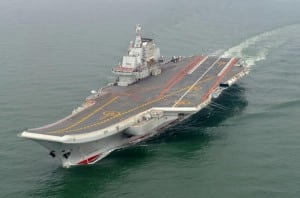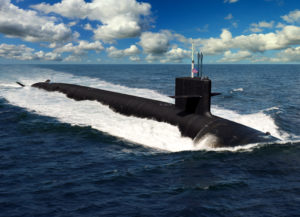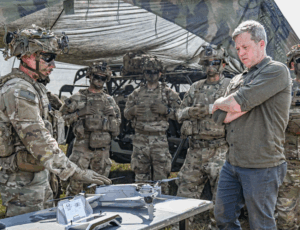
By Steven Wills, Defense Opinion Writer.
It’s been a bad recent stretch for the Russian and Chinese navies. The Russian northern fleet’s new ocean-going tug Kapitan Ushakov began sinking on Aug. 8 and capsized and sank pierside the next day, despite Russian attempts to save her.
The Chinese navy and coast guard had an embarrassing day on Aug. 10 as the destroyer Guilin appeared to ram a Chinese coast guard ship, sheering off its bow and possibly causing a number of casualties.
The Russian tug sinking is another sad addition to a book of sorrows on poor Russian navy performance, both in combat in the Black Sea as well as in other fleets. The Chinese navy, however, will likely be able to repair their damaged ships in weeks, given their significant maritime industrial capacity.
By contrast, the U.S. Navy took months to repair collision damage to destroyers Fitzgerald and McCain, highlighting U.S. maritime industrial base issues nearly a decade in the past.
The Russian navy book of sorrows
While the Russian submarine fleet has remained strong and continues to improve, its surface fleet seems to go from one disaster to the next. The Black Sea fleet surface force has suffered numerous casualties to combatant and amphibious warships and has been driven away from both the Ukrainian littoral and from its own base in Sevastopol.
The Russian’s navy only aircraft carrier, Admiral Kuznetsov, appears to have a reached the point on being uneconomically repairable and some experts suggest she will never again set sail in active service. The sinking of the Kapitan Ushakov is just another chapter in a darkening horizon for Russian naval interests. The Russian submarine fleet remains an effective force, a capability pioneered by the Russian Tsarist fleet and one that continues to be regarded as Russia’s front rank naval capability.
Bumper cars in the Philippines
The Chinese navy and coast guard have been persistent intruders in Philippine territorial waters for nearly a decade, with the Chinese coast guard ship involved in the collision a regular participant in those actions.
But the events in early August highlighted a spectacular display of poor seamanship by China while chasing and trying to ram the Philippine coast guard cutter Sultana in the vicinity of Scarborough Shoal.
The guided missile destroyer Guilin collided with the Chinese coast guard ship, sheering off the bow of the latter vessel with possible loss of life among the Chinese sailors holding fenders on the ship’s forecastle, the forward part of the upper deck area. The Guilin did not escape without damage, with several photos of the ship showing obvious holes in the ship’s bow beneath its forward gun mount.
China’s vast maritime industrial base
While it looks bad on film, and all loss of life at sea is regrettable, the Chinese will likely make good their losses quickly given their vast maritime industrial base. China boasts dozens of drydocks where the Guilin can be quickly repaired and coast guard cutter fitted with a new bow.
In the period 2020-2025, China produced nearly 40 combatant ships. In the same period the U.S. Navy produced 32 ships of all types, but fleet size hovered at under 300 ships, while the Chinese Fleet increased from 239 to 276 combatant vessels, with an overall fleet of 370 ships.
U.S. Navy shipbuilding capacity remains outmatched by the Chinese by a wide margin.
These same Chinese yards can equally execute repairs to ships. The merchant ship Dali that infamously collided with and destroyed the Baltimore Key Bridge in 2024 was brought to the Fujian Huadong Shipyard in November 2024.
The ship required extensive repairs to the bow, cargo holds, machinery, hydraulic and electrical systems and other complex structures. The Chinese shipyard completed these repairs January 2025, 10 days ahead of schedule. This is a standard of excellence hard to match by the U.S. and allied nations.
The U.S. Navy once set the standard for rapid warship repair, with the USS Yorktown (CV 5) famously repaired at Pearl Harbor Naval Shipyard in just 72 hours following the Battle of the Coral Sea and in time to sail for the Battle of Midway.
The U.S. must restore its ability to similarly repair battle damaged ships at short notice, or it could be rapidly outmatched in its ability to field required numbers of ships in the Indo-Pacific.
Professionalism at sea matters
Operations at sea are inherently dangerous from the start and can exponentially grow in risk if nations encourage reckless behavior, as do the Chinese and the Russians. Both of those nations encourage the same kinds of dangerous behavior at sea not seen since the Cold War. They represent a growing threat to safety at sea for law abiding nations at sea.
All nations need to be on guard when they sight the warships and coast guards of China and Russia when they appear on the horizon, as their ships might be the next target of aggressive, revisionist power nations.
Steven Wills is the navalist at the Center for Maritime Strategy.

Are you a Defense Daily reader with a thought-provoking opinion on a defense issue? We want to hear from you.
- We welcome submissions of opinion articles on national security, defense spending, weapons systems and related areas.
- We welcome submissions from lawmakers, administration officials, industry representatives, military officials, academics, think tank experts, congressional candidates, international experts and others on issues important to the national defense community.
- We welcome a diverse range of opinions all along the political spectrum.
- Email: editor@DefenseOpinion.com













